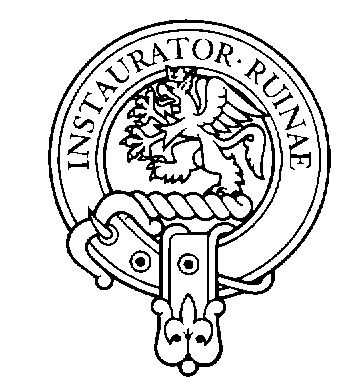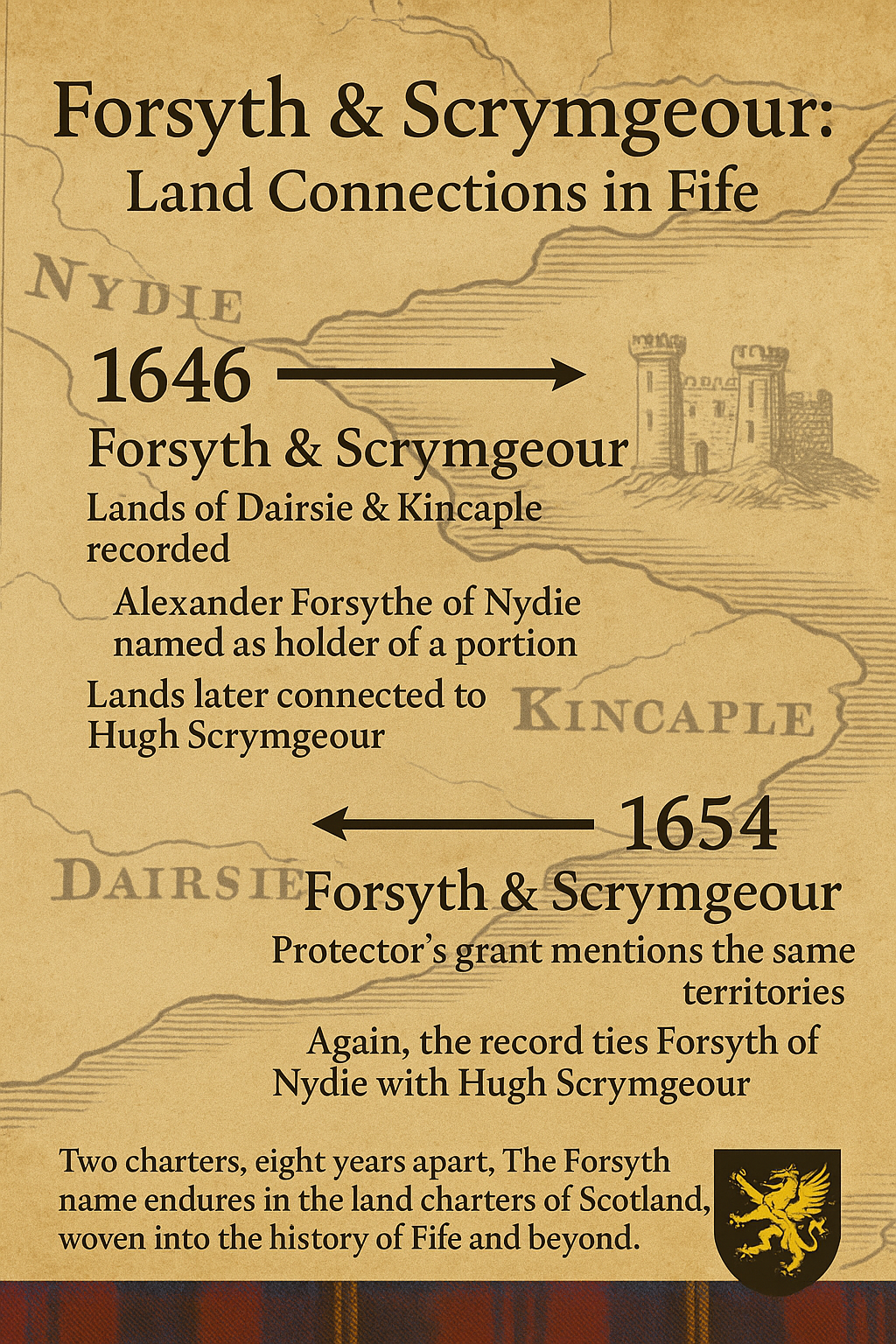Alexander Forsyth of Nydie
/One of the richest resources for Scottish history is the Register of the Great Seal of Scotland (Registrum Magni Sigilli Regum Scotorum), which preserves charters issued under the king’s seal. These charters record land transactions, inheritances, and royal confirmations—offering us a glimpse into the political and social fabric of Scotland.
We found this little snip of history in Vol 9.
1650. At Edinburgh, 8 April.
The King, with consent, has granted and quitclaimed to Thomas Hamilton of Brotherstaine, his heirs and assigns whatsoever (under lawful reversion), the lands of Dairsie, etc. (as in the charter of 1641, extending to Todhall); the twenty-fourth part of the town and lands of Kincaple (formerly occupied by John Mitchell); the sixteenth part of the same lands on the western side thereof (formerly occupied by David Forrester); and another sixteenth part of the same (formerly belonging to Alexander Forsythe of Nydie, and afterwards to the late Hugh Scrymgeour),within the regality of St Andrews, in the sheriffdom of Fife; with power to make conduits or drains within the said lands of Kincaple, etc.
“…part of the lands formerly pertaining to Alexander Forsythe of Nydie and afterwards to Hugh Scrymegour…”
This brief line tells us a great deal. First, it confirms that Alexander Forsythe held part of Nydie in the regality of St. Andrews, county of Fife—a region of significant importance in the 17th century. The passing of these lands into the hands of Hugh Scrymegour (a name tied to the hereditary sword-bearers of Scotland) reflects both the prestige of the estates and the shifting fortunes of landholders.
Why is this important for Forsyth history? Each mention helps us map Forsyth influence across Scotland. While some families left little written record, land charters preserve their presence and connections. In this case, the Forsyth name is woven into the legal fabric of property exchange, alongside notable families like the Hamiltons and the Scrymegours.
For genealogists, such entries may help confirm residence, relationships, or lines of descent. For historians, they illustrate the way lands were transferred through royal confirmation, debts, marriages, or political maneuvering.
In short: This 1646 record is another piece of evidence showing the Forsyth footprint in Fife—an enduring legacy captured in the official seal of Scotland’s kings.
Are you a descendant of Forsyths?
🔗 Join Clan Forsyth Society USA to explore your heritage and connect with others researching the Forsyth name across the centuries!

